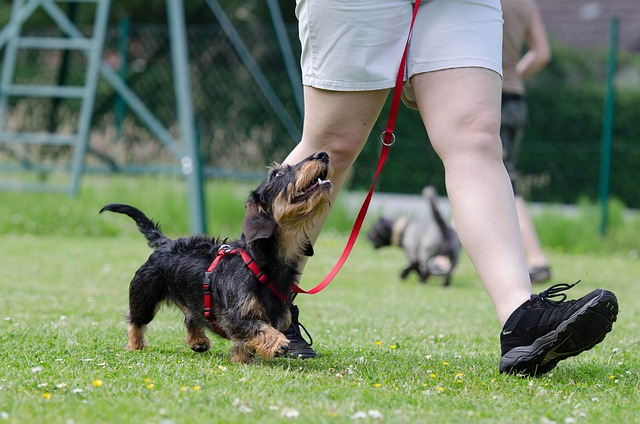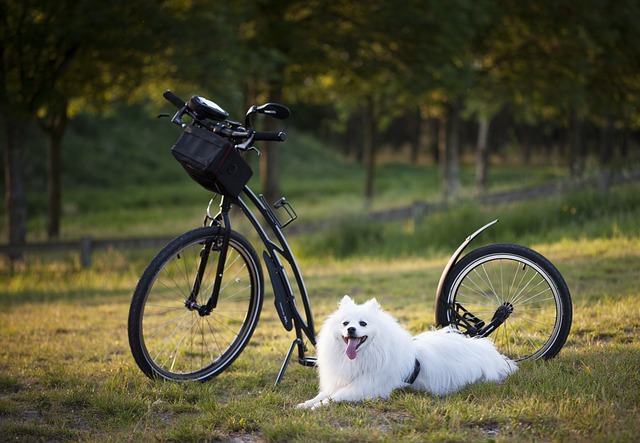Basic obedience training for dogs involves teaching essential commands like sit, stay, and come in a structured manner. This training helps establish a strong bond between the owner and the dog, ensuring better communication and behaviour.
By incorporating positive reinforcement techniques, dogs can learn to respond reliably to commands and behave appropriately in various situations. Obedience training also enhances the safety of the dog and those around them, promoting a harmonious relationship within the household. In addition to improving obedience, training sessions provide mental stimulation and physical exercise, contributing to the overall well-being of the dog.
With consistency and patience, basic obedience training sets a solid foundation for a well-behaved and happy canine companion.
What Is Canine Obedience

Introduction to Canine Obedience:
As a dog owner, you must have come across the term ‘obedience training’ at some point. Basic obedience training for dogs is an essential aspect of responsible pet ownership. It involves teaching your dog how to respond to basic commands such as sit, stay, come, and heal. The goal of obedience training is to help your dog become a well-behaved, obedient, and sociable member of your family. In this blog post, we will discuss the importance of training your dog and the goals of basic obedience training.
The Importance Of Training Your Dog
Training your dog is not just about teaching them commands. It is also about building a strong relationship with them based on trust, respect, and communication. Here are some reasons why training your dog is essential:
- Training helps prevent behavioural issues such as aggression, separation anxiety, and destructive behaviour.
- Training enhances your dog’s physical and mental stimulation, which is necessary for their overall wellbeing.
- Training helps your dog become more sociable and well-behaved around other people and animals.
- Training helps you communicate better with your dog, which strengthens the bond between you and your furry friend.
Goals Of Basic Obedience Training
The goal of basic obedience training is to teach your dog fundamental commands that will help them become a well-behaved and obedient pet. Here are some of the goals of basic obedience training:
- Sit: Teaching your dog to sit on command is one of the first things you should do. It helps them learn self-control and is the foundation for other commands such as stay and come.
- Stay: Teaching your dog to stay in one place is essential for their safety and your peace of mind. It also helps them learn patience and self-control.
- Come: Teaching your dog to come when called is essential for their safety. It also helps them learn trust and respect for you as their owner.
- Heel: Teaching your dog to walk calmly by your side on a leash is essential for their safety and your convenience. It also helps them learn discipline and focus.
In conclusion, basic obedience training is an essential aspect of responsible pet ownership. It helps your dog become a well-behaved, obedient, and sociable member of your family. By training your dog, you enhance their physical and mental wellbeing and strengthen the bond between you and your furry friend.
Essential Commands To Teach Your Dog

Mastering ‘sit’ And ‘stay’
Teach your dog to sit and stay for obedience and control.
The ‘come’ Command For Safety
Ensure your dog learns to come when called, crucial for safety.
Heel And Loose-leash Walking
Practice heeling and loose-leash walking for proper leash manners.
Teaching ‘down’ And ‘stand’
Train your dog to lie down and stand on command for versatility.
Positive Reinforcement Techniques
Positive reinforcement techniques are a cornerstone of basic obedience training for dogs. It involves using rewards to encourage and reinforce desired behaviours, making the training experience enjoyable for both the dog and the owner.
Reward-based Training Explained
Reward-based training is centred on the concept of positive reinforcement. When a dog exhibits a desirable behaviour, such as sitting on command, they are rewarded with a treat, praise, or a toy. This encourages the dog to repeat the behaviour in the future. Rewards can be anything that the dog finds enjoyable and motivating, and they are essential for creating a strong bond between the dog and the owner.
Timing And Consistency In Rewards
The timing and consistency of rewards are crucial in positive reinforcement training. Rewards should be given immediately after the dog performs the desired behaviour, so they can make a clear connection between the action and the reward. Consistency is also key; the same behaviour should always be met with the same reward, reinforcing the desired action and preventing confusion.
Correcting Common Behavioural Issues

Correcting common behavioural issues is an essential aspect of basic obedience training for dogs. Addressing these issues fosters better behaviour in your pet and contributes to a harmonious relationship between you and your furry friend.
Dealing With Excessive Barking
Excessive barking can be a nuisance, but it can be managed through basic obedience training. Teach your dog the “quiet” command and reward them for obeying. Additionally, identify the triggers for barking and work on desensitizing your dog to those triggers.
Preventing Jumping On People
Jumping on people can be a common behavioural issue in dogs. To address this, train your dog to sit and stay when greeting people. Consistently reinforce this behaviour and discourage jumping by turning away or ignoring the dog when they do so.
Counteracting Destructive Chewing
Destructive chewing is a behaviour that can be curbed through basic obedience training. Provide appropriate chew toys and redirect your dog’s attention to these toys when they attempt to chew on inappropriate items. Consistency and positive reinforcement are key to addressing this behaviour.
Socialization And Its Role In Obedience
Dog socialization plays a crucial role in their obedience and overall behaviour. It involves exposing your dog to various environments, people, and other animals to help them become well-adjusted and well-behaved companions.
Introducing Your Dog To New Environments
When introducing your dog to new environments, start with quieter and less overwhelming places. Gradually expose them to busier areas, different surfaces, and various sounds. This gradual exposure helps reduce fear and anxiety, leading to a more confident and obedient dog.
The Benefits Of Socializing With Other Dogs
Socializing your dog with other dogs is essential for their obedience. It teaches them proper social cues, communication skills, and how to interact appropriately. Additionally, interacting with other dogs can help prevent behavioural issues such as aggression or fear towards other animals.
Training Equipment And Tools
Training equipment and tools are essential for basic obedience training for dogs. The right equipment can make the training process more effective and efficient, helping your dog to understand and respond to commands. Here are some key tools and equipment to consider:
Choosing The Right Leash And Collar
When it comes to choosing a leash and collar for your dog, it’s important to consider the size and breed of your dog. For larger breeds, a sturdy, durable leash and collar are essential, while smaller dogs may do well with a lighter, more flexible option. It’s also important to consider the material of the leash and collar, as well as the type of closure mechanism. A secure and comfortable fit is crucial for your dog’s safety and your ability to control them during training sessions.
Clickers And Other Training Aids
Clicker training has become increasingly popular for teaching dogs basic obedience commands. A clicker is a small, handheld device that makes a distinct clicking sound when pressed. This sound is used to mark the desired behaviour, signalling to the dog that a reward is coming. In addition to clickers, there are other training aids such as treat pouches, target sticks, and training mats that can help reinforce positive behaviours during training sessions.
Obedience Training Across Different Breeds

When training your dog, it’s crucial to consider their breed for effective results.
Each breed has unique characteristics that require tailored training approaches.
By understanding your dog’s breed-specific traits, you can adjust training methods accordingly.
For example, herding breeds may respond well to commands involving movement.
Setting Up A Training Schedule

Establishing a structured training routine is crucial for teaching dogs basic obedience skills. By creating a consistent schedule, pet owners can effectively train their dogs to respond to commands, such as sit, stay, and come. Training sessions should be short, engaging, and positive to reinforce good behaviour.
Frequency And Duration Of Training Sessions
When it comes to basic obedience training for dogs, consistency is key. Setting a regular training schedule is crucial to ensure that your dog learns and retains the lessons. The frequency and duration of training sessions will depend on your dog’s age, breed, and temperament.
Puppies have shorter attention spans and may require more frequent, shorter training sessions. Adult dogs, on the other hand, can handle longer sessions but may only need them a few times a week. A good rule of thumb is to start with short sessions of 5–10 minutes and gradually increase the duration as your dog becomes more comfortable with the training.
Maintaining Consistency And Patience
Maintaining consistency in your training schedule is just as important as the frequency and duration of the sessions. Dogs thrive on routine, and they learn best when they know what to expect. Set aside a specific time each day for training and stick to it as much as possible.
Patience is also key when it comes to obedience training. Dogs learn at their pace, and it may take several sessions before they fully understand a command. Avoid getting frustrated or losing your temper, as this can hinder your dog’s progress and cause them to become anxious or fearful. Instead, stay calm and positive, and reward your dog for their efforts.
In conclusion, setting up a training schedule is an essential part of basic obedience training for dogs. By determining the frequency and duration of sessions and maintaining consistency and patience, you can help your dog learn and retain the lessons effectively. Remember to keep the training sessions fun and positive, and don’t forget to reward your furry friend for their hard work!
Troubleshooting Training Challenges
When it comes to basic obedience training for dogs, troubleshooting training challenges is an essential part of the process. While most dogs respond well to training, some may exhibit stubbornness or noncompliance, making it necessary to address these issues effectively. Redirecting unwanted behaviours is also a common challenge that dog owners encounter, requiring specific strategies to overcome. Understanding how to tackle these training obstacles is crucial for achieving success in basic obedience training.
Overcoming Stubbornness And Noncompliance
Dogs, like humans, have unique personalities, and some may be more stubborn or resistant to training than others. When encountering stubbornness or noncompliance, it’s important to remain patient and consistent in your approach. Positive reinforcement techniques, such as using treats and praise, can be highly effective in motivating a stubborn dog to comply with commands. Additionally, breaking down training into smaller, manageable steps and repetition can help reinforce desired behaviours and gradually overcome stubbornness.
Redirecting Unwanted Behaviours
Unwanted behaviours, such as jumping, barking, or chewing, can disrupt the training process and hinder progress. Redirecting these behaviours involves identifying the root cause and providing alternative, appropriate outlets for your dog’s energy and instincts. Consistent correction and redirection, along with providing appropriate toys and activities, can help steer your dog away from undesirable behaviours and towards more acceptable actions. Consistency in redirection and positive reinforcement is crucial for effectively addressing unwanted behaviours.
Advanced Training And Next Steps
Find the essence of Basic Obedience Training for Dogs, laying the groundwork for advanced skills and behaviours. Take the next steps to enhance your canine companion’s training journey with specialized techniques and personalized guidance for a well-rounded training experience.
Transitioning From Basic To Advanced Training
As your dog masters basic obedience, it’s time to transition to more advanced training. This phase focuses on refining skills and introducing new commands.
Advanced training builds on the foundation of basic obedience, challenging your dog to perform tasks with greater precision and consistency.
Continued Education And Obedience Trials
Once advanced training is complete, consider continued education opportunities such as specialized courses or workshops to enhance your dog’s skills.
Obedience trials provide a platform for dogs to showcase their abilities in a competitive setting, testing their obedience in various scenarios.
- Explore advanced training classes
- Participate in obedience competitions
- Continue learning and challenging your dog
By continuing to train and engage with your dog, you can strengthen your bond and enjoy a well-behaved and responsive companion for years to come.
Frequently Asked Questions
What Is Considered Basic Dog Training?
Basic dog training includes commands like sit, stay, come, and heel. It also involves leash walking, potty training, and socialization with other dogs and people.
How Long Does It Take To Train A Dog Basic Obedience?
It usually takes 4–6 months to train a dog basic obedience, but it depends on the dog’s age, breed, and temperament. Consistent training and positive reinforcement are key. Daily short sessions work best.
What Does Obedience Training Consist Of?
Obedience training typically includes teaching your dog basic commands such as sit, stay, come, and heel. It also involves leash training, socialization, and correcting unwanted behaviours like jumping or barking. The goal is to establish trust and respect between the owner and the dog, making them a well-behaved companion.
How To Teach A Dog Basic Obedience?
To teach a dog basic obedience, use positive reinforcement, such as treats and praise. Be consistent with commands and practice daily in short sessions. Seek professional help if needed.

Mastering basic obedience training for dogs creates a strong bond between you and your furry companion. Consistent training builds trust and enhances communication, leading to a well-behaved pet. With patience and positive reinforcement, you can shape your dog’s behaviour and enjoy a harmonious relationship for years to come.
